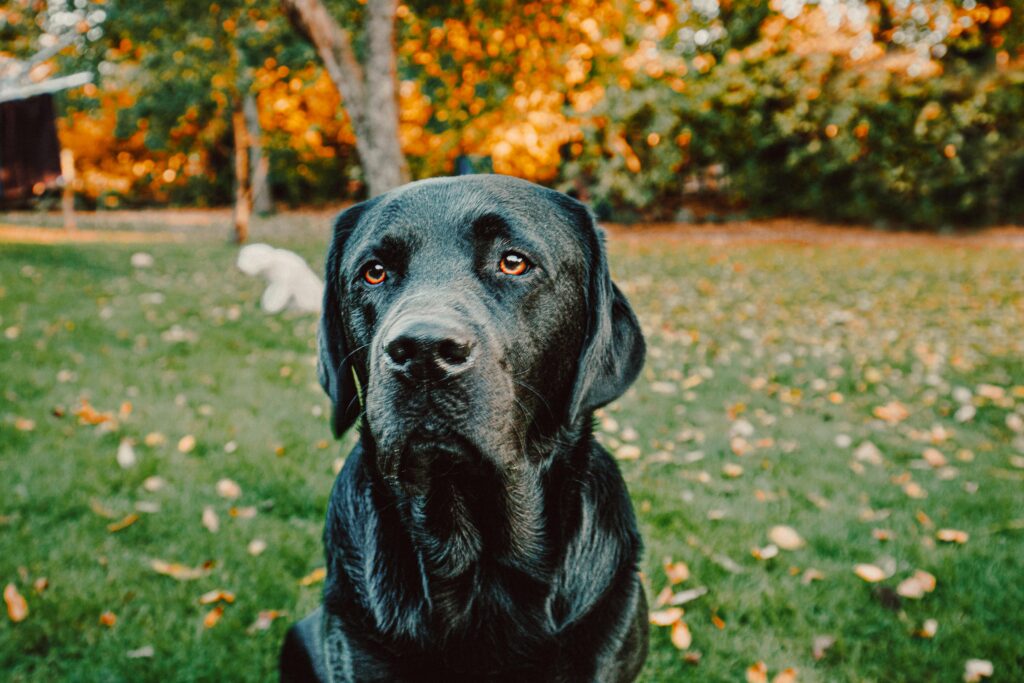Labrador Retriever Grooming: Tips and Tricks for a Happy and Healthy Coat

Are you considering adding a furry friend to your family? Look no further than the lovable Labrador Retriever. These gentle giants have captured the hearts of millions worldwide with their friendly demeanor, intelligence, and playful spirit.
In this comprehensive guide, we’ll delve into the fascinating world of Labradors, exploring their history, temperament, and care requirements. Whether you’re a seasoned dog owner or a first-time pet parent, you’ll find valuable insights to help you understand and care for your furry companion.
From puppyhood to senior years, we’ll cover everything you need to know, including:
- Choosing the Perfect Labrador: Factors to consider when selecting a puppy or adopting an adult dog.
- Training and Behavior: Tips and techniques to train your Labrador and address common behavioral issues.
- Health and Wellness: Essential information on common health problems, preventative care, and a balanced diet.
- Grooming and Maintenance: A step-by-step guide to keep your Labrador looking and feeling their best.
- Socialization and Exercise: How to ensure your Labrador thrives both physically and mentally.
Join us as we embark on this journey to discover the wonders of Labrador Retriever ownership.
Table of contents
Why Labrador Retriever Grooming Matters
Grooming isn’t just about keeping your Labrador looking good; it’s an essential part of their health and well-being. Regular grooming helps to:
- Keep their coat free of dirt, mats, and dander.
- Reduce excessive shedding by removing loose fur.
- Distribute natural oils throughout the coat for a natural shine.
A regular grooming routine can also be a bonding experience, helping your Labrador feel relaxed and more connected with you.
Understanding the Labrador Coat
Labradors have a unique double coat, specifically designed to support their active, water-loving lifestyles.
Labrador Coat Types
Labradors have a short, dense outer coat and a softer undercoat. This combination offers waterproof properties, insulating them in colder weather while keeping them comfortable after swims. For more insights, you can check American Kennel Club’s Labrador Coat Guide.
Seasonal Shedding Patterns
Labradors are known for their “blowing coat” seasons in spring and fall, where they shed more heavily. During these times, you may notice increased fur around your home. Managing this with regular grooming is crucial, and the ASPCA’s Shedding Tips offers additional strategies for dealing with heavy seasonal shedding.
Brushing and Combing Techniques
Brushing is the foundation of a healthy coat, especially for Labradors who are prone to shedding.
Tools for Effective Brushing
To manage a Labrador’s double coat, you’ll need a few essential grooming tools:
- Slicker Brush: Ideal for daily use to manage loose hair.
- Undercoat Rake: Perfect for removing thick, shedding fur during seasonal changes.
- Bristle Brush: Adds a final polish and promotes natural shine.
For top-quality grooming tools, check out trusted retailers like Chewy or Petco.
How Often to Brush
Daily brushing is recommended during heavy shedding seasons (spring and fall). Outside of these times, brushing once or twice a week will keep the coat healthy and control stray hairs around the house.
Step-by-Step Brushing Guide
- Begin at the Head: Start brushing from the head and work towards the tail, brushing in the direction of hair growth.
- Adjust Pressure: Use gentle strokes to avoid irritating the skin, especially if your Labrador has sensitive areas.
- Focus on Undercoat: Use an undercoat rake during shedding seasons to control loose fur and prevent mats.
For brushing techniques and a complete video guide, visit PetMD’s Grooming Guide.
Bathing Your Labrador Retriever
Bathing helps remove dirt, allergens, and excess hair, but over-bathing can strip the coat of its natural oils.
Choosing the Right Products
Use a dog-specific shampoo with a gentle formula. Hypoallergenic and oatmeal-based shampoos are particularly good for Labradors with sensitive skin. Avoid human shampoos, as they can disrupt your dog’s skin pH. Check out PetSmart’s Dog Shampoo Collection for a variety of options.
Bathing Frequency
Labradors typically need a bath every 4-6 weeks. Bathing too frequently can dry out their skin, so keep it minimal unless they get particularly dirty or have been swimming.
Post-Bath Drying Techniques
After the bath, towel-dry your dog thoroughly. If you use a blow dryer, set it to a cool or low-heat setting to avoid skin irritation. Leaving them wet can lead to skin issues like hot spots.
For more tips on safe dog bathing, The Spruce Pets Guide offers additional insights.
Ear Cleaning and Dental Care
Ear and dental hygiene are essential to your Labrador’s overall health and should not be overlooked.
Ear Cleaning Steps
Labradors are prone to ear infections due to their floppy ears, which can trap moisture.
- Use a vet-approved ear cleaner like those available at VetRxDirect.
- Apply a few drops to a cotton ball and gently wipe the visible area of the ear.
- Clean weekly or after swimming to help prevent infections.
Visit the American Veterinary Medical Association for ear care recommendations.
Labrador Dental Care Tips
Brushing your Labrador’s teeth 2-3 times a week helps prevent plaque buildup. Use a dog-specific toothbrush and toothpaste—never human toothpaste, which can be harmful to dogs. Dental treats and chew toys also aid in maintaining oral health. See options at Chewy for dental care products.
Nail Trimming Tips
Nail trimming is essential to your dog’s comfort and gait.
Signs It’s Time for a Trim
If you hear your Labrador’s nails clicking on the floor, it’s time for a trim. Overgrown nails can cause pain and even affect posture. Regular trims keep your dog comfortable and healthy.
How to Trim Nails Safely
Use a dog nail clipper or a grinder to avoid splintering. Trim small amounts to avoid cutting the quick, a sensitive part of the nail. Many pet owners find grinders to be less intimidating, especially for beginners.
For guidance, see the AKC’s Nail Trimming Tips and video tutorials.
Seasonal Grooming Tips
Labradors’ grooming needs change with the seasons. Adapting your routine can help your dog stay comfortable and healthy year-round.
Winter Coat Care
In colder months, Labradors develop a thicker undercoat for insulation. Brush more frequently to prevent matting, and consider a moisturizing coat conditioner if you live in a particularly dry area.
Summer Coat Maintenance
Summer requires frequent brushing to remove shedding fur and prevent overheating. Always check for fleas or ticks after outdoor activities, and use a flea comb for extra care. For pest prevention, visit PetSmart for safe treatment options.

Common Grooming Mistakes to Avoid
Avoid these common pitfalls to keep your Labrador’s coat and skin in optimal condition:
- Over-bathing: Frequent bathing strips the coat of its natural oils, leading to dryness.
- Using human products: Human shampoos can disrupt a dog’s skin pH, causing irritation.
- Skipping ear and nail care: These areas are crucial to health but often overlooked in grooming routines.
For a full list of grooming dos and don’ts, see Rover’s Grooming Tips.
FAQ: Labrador Retriever Grooming
1. How often should I bathe my Labrador Retriever? Over-bathing can strip your Labrador’s coat of its natural oils, leading to dryness and irritation. Aim to bathe your dog every 2-3 months, or more frequently if they’ve gotten particularly dirty. Use a gentle, dog-specific shampoo to avoid skin irritation.
2. How often should I brush my Labrador Retriever’s coat? Regular brushing is essential for maintaining a healthy Labrador coat. Aim to brush your dog at least 2-3 times per week. During shedding seasons, you may need to brush daily.
3. How do I keep my Labrador’s coat shiny and healthy? A balanced diet, regular brushing, and occasional conditioning treatments can help keep your Labrador’s coat shiny and healthy. You can also use a high-quality dog-specific conditioner to add moisture and shine.
4. How often should I trim my Labrador Retriever’s nails? Regular nail trimming is important to prevent overgrown nails, which can cause discomfort and lead to walking difficulties. Aim to trim your dog’s nails every 2-3 weeks.
5. How do I clean my Labrador Retriever’s ears? Use a gentle, dog-specific ear cleaner to clean your Labrador’s ears. Avoid using cotton swabs, as they can damage the ear canal. Clean your dog’s ears every 2-4 weeks, or more often if they have excessive ear wax or debris.
6. How do I deal with my Labrador Retriever’s shedding? Regular brushing can help to minimize shedding. You can also use a deshedding tool to remove loose hair. During heavy shedding seasons, consider using a high-quality dog shampoo formulated to reduce shedding.
7. How do I prevent matting in my Labrador Retriever’s coat? Regular brushing is the best way to prevent matting. If you find a mat, carefully work it out with a detangling comb or a mat splitter. Avoid pulling on the mat, as this can damage your dog’s skin.
8. How do I keep my Labrador Retriever’s teeth clean? Regular dental care is essential for your Labrador’s overall health. Brush your dog’s teeth at least 2-3 times per week with a dog-specific toothpaste and toothbrush. You can also provide your dog with dental chews or treats to help clean their teeth.
9. What are some common grooming mistakes to avoid with Labrador Retrievers?
- Over-bathing
- Using human shampoo or harsh chemicals
- Cutting the hair around the ears too short
- Neglecting dental care
- Ignoring matting and tangles
10. How often should I take my Labrador Retriever to a professional groomer? While you can do most of your Labrador’s grooming at home, it’s a good idea to take them to a professional groomer every 2-3 months for a full groom, including bathing, brushing, nail trimming, ear cleaning, and hair clipping (if necessary).
Conclusion: Happy Pup, Happy Life
As we conclude our exploration of the wonderful world of Labrador Retrievers, we hope this guide has provided you with valuable insights and practical advice. Remember, a happy and healthy Labrador is a result of love, care, and understanding.
By following the tips and recommendations outlined in this guide, you can ensure that your furry friend lives a long, fulfilling life by your side.
Key Takeaways:
- Love and Patience: The foundation of a strong bond with your Labrador.
- Proper Training: Essential for a well-behaved and obedient dog.
- Balanced Diet: Nourishment is key to optimal health.
- Regular Exercise: Keeps your Labrador physically and mentally fit.
- Preventive Care: Early detection and treatment of health issues.
- Grooming: Maintaining a healthy and attractive coat.
- Socialization: Encouraging positive interactions with people and other dogs.
By incorporating these elements into your Labrador’s daily routine, you’ll create a loving and supportive environment that will enrich both your lives.
Remember, every Labrador is unique. While this guide offers general advice, it’s important to tailor your approach to your individual dog’s needs and personality.
We encourage you to continue learning and seeking expert advice from veterinarians and professional dog trainers.
Thank you for joining us on this journey. We hope you and your Labrador Retriever will create many beautiful memories together.








